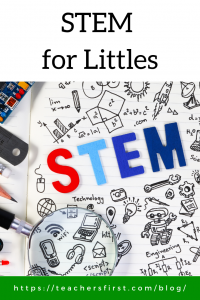 Have you found it hard to find engaging STEM activities for younger students? If you are like me, you may have spent way too much time searching the internet with little success. Or perhaps you find great lessons, but they aren’t easily adaptable for younger students.
Have you found it hard to find engaging STEM activities for younger students? If you are like me, you may have spent way too much time searching the internet with little success. Or perhaps you find great lessons, but they aren’t easily adaptable for younger students.
The Picture Stem Project (TeachersFirst review) is a STEM resource for grades K-2. This resource uses engineering challenges and picture books as the basis of instructional units for learning science, math, computational thinking, and reading. Also, each unit focuses on incorporating the Engineering Design Process directly into classroom instruction.
Each unit includes a comprehensive printable curriculum. The materials include correlation to standards, lesson and unit overviews, and all additional information needed for incorporating robust STEM activities into primary classrooms.
The Kindergarten unit is called Designing Paper Baskets. Students work throughout the unit to explore patterns and the strength of paper with the ultimate goal of designing a basket strong enough to carry a rock collection. Activities for all grade levels include a 45-minute introductory lesson along with six literacy and six STEM lessons.
The First Grade unit focuses on animals and animal habitats through an exploration of the needs of a hamster. Students apply their understanding of 2D and 3D shapes to create a prototype for a hamster cage and exercise trail.
Second Graders focus on Designing Toy Box Organizers. Students help a toy box company design a new storage unit designed to encourage children to keep their toys organized and easy to access. The math concept in the toy box activities focuses on standard units of measurement.
Although designed to fit grade-level standards, each of these units provides opportunities for modification and uses for different grades. By changing books and adjusting the difficulty level of tasks, these units provide STEM lessons to use throughout the school year.
As you plan to use these activities, consider the purposeful use of technology to enhance and extend your lessons. Many educators already use SeeSaw (TeachersFirst review) with elementary students. Use SeeSaw or a similar teacher utility to:
- Share pictures of students participating throughout the different unit activities.
- Add video recordings of student discussions and reflections.
- Add videos as students predict outcomes and compare their predictions to the results.
- Share student activities with parents and suggest questions to help students share and explain their learning for example – “How did you know that you needed to…” and “What happened when you tried to …”
- Create a classroom learning journal. Start by writing together as a class, then encourage students to begin creating and writing independently.
Younger students need more support and guidance to reflect upon their learning and apply their knowledge to new situations than older students. Using well-researched techniques integrated into thoughtful lessons provides strong learning foundations necessary to move students through the reflective thinking process. These units from The Picture Stem Project offer teachers of young students excellent tools to teach STEM concepts to students and also provide a model for developing lessons on their own.
What do you do to teach STEM lessons in your classroom? Do you teach older students but have suggestions for teachers of primary students? Share your thoughts with our learning community in the comments below.

